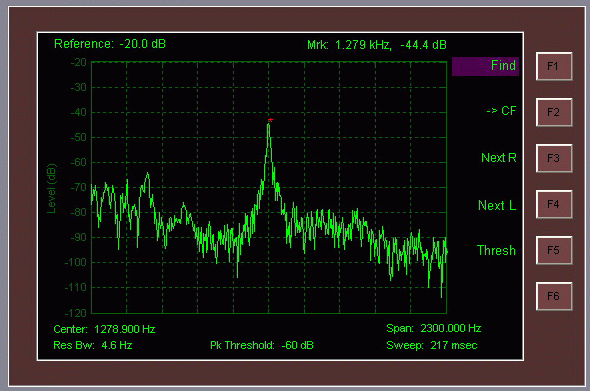The rise of the Internet of Things (IoT) has ushered in a new era of connectivity, enabling a wide range of devices to communicate and share data seamlessly. From smart homes and industrial applications to healthcare and agriculture, IoT has transformed various industries. However, this interconnected world heavily relies on wireless communication, and ensuring reliable connectivity is paramount. This is where spectrum analyzers play a pivotal role in IoT testing.

Understanding the Role of Spectrum Analyzers in IoT Testing
Spectrum analyzers are invaluable tools when it comes to analyzing and diagnosing wireless communication issues. They provide insights into the radio frequency (RF) spectrum, helping identify potential sources of interference, congestion, and other problems that could disrupt IoT communication. In essence, spectrum analyzers give us a window into the invisible world of RF signals, allowing us to make informed decisions about optimizing wireless connectivity.
Key Applications of Spectrum Analyzers in IoT Testing
Interference Detection and Analysis
One of the major challenges in maintaining reliable wireless communication for IoT devices is interference. Spectrum analyzers excel at detecting and analyzing interference sources. Imagine a smart home scenario where Wi-Fi signals from neighbors’ devices are causing intermittent connectivity issues. A spectrum analyzer can help identify the frequency bands where these devices are operating and suggest alternative, less crowded channels.
Frequency Band Analysis
Choosing the right frequency bands for IoT devices is crucial. Some bands might be heavily congested, leading to reduced performance and reliability. By using spectrum analyzers, you can scan different frequency bands and identify clean channels for your IoT devices. This ensures that your devices have sufficient room to operate without interference from other signals.
Signal Strength and Coverage Analysis
In the world of IoT, signal strength and coverage are critical factors. Spectrum analyzers allow you to measure signal strength across different areas and analyze coverage patterns. This information helps you strategically position IoT devices to ensure optimal coverage and minimize dead zones.
Identifying Modulation and Signal Quality
Different IoT devices use various modulation schemes for data transmission. Spectrum analyzers can help you identify the modulation schemes being used and assess the quality of the transmitted signals. This is essential for maintaining data integrity and reliable communication.
IoT Testing Scenarios: Practical Examples
Let’s delve into a few practical examples of how spectrum analyzers contribute to reliable wireless connectivity in IoT testing:

Smart Home Environment
In a smart home, various devices such as smart thermostats, Wi-Fi cameras, and smart locks communicate wirelessly. However, the multitude of wireless devices can lead to congestion and interference. A spectrum analyzer can help identify devices operating in the same frequency range, allowing you to optimize channel selection and improve overall connectivity.
Industrial IoT (IIoT) Setup
Industrial IoT applications often involve sensors and machinery in challenging environments. Interference from nearby equipment, machinery, or other wireless devices can disrupt communication. Spectrum analyzers help identify interference sources, enabling you to take corrective actions and ensure consistent communication for critical IIoT systems.
Agricultural IoT Applications
In agricultural IoT setups, wireless sensors monitor soil moisture, weather conditions, and crop health. However, factors like terrain and vegetation can affect wireless signal propagation. By using spectrum analyzers, you can analyze signal strength and choose the best locations for sensors, ensuring reliable data transmission.
Best Practices for Using Spectrum Analyzers in IoT Testing
To make the most of spectrum analyzers in IoT testing, consider the following best practices:
Pre-Deployment Analysis: Perform spectrum analysis before deploying IoT devices to identify potential interference sources and choose optimal frequency bands.
Regular Monitoring and Maintenance: Wireless environments can change over time due to new devices and sources of interference. Regular spectrum analysis helps you detect and address new issues as they arise.
Optimizing IoT Device Placement: Use spectrum analyzers to strategically position IoT devices for maximum coverage and signal strength, minimizing dead zones.
As the IoT ecosystem continues to expand, maintaining reliable wireless connectivity becomes increasingly crucial. Spectrum analyzers empower engineers and technicians to address wireless communication challenges head-on. By leveraging these tools, IoT practitioners can optimize channel selection, detect interference, and ensure consistent connectivity for a seamless IoT experience. With spectrum analyzers at their disposal, the potential of the IoT landscape can be fully realized, delivering on the promise of connected devices and smart environments.